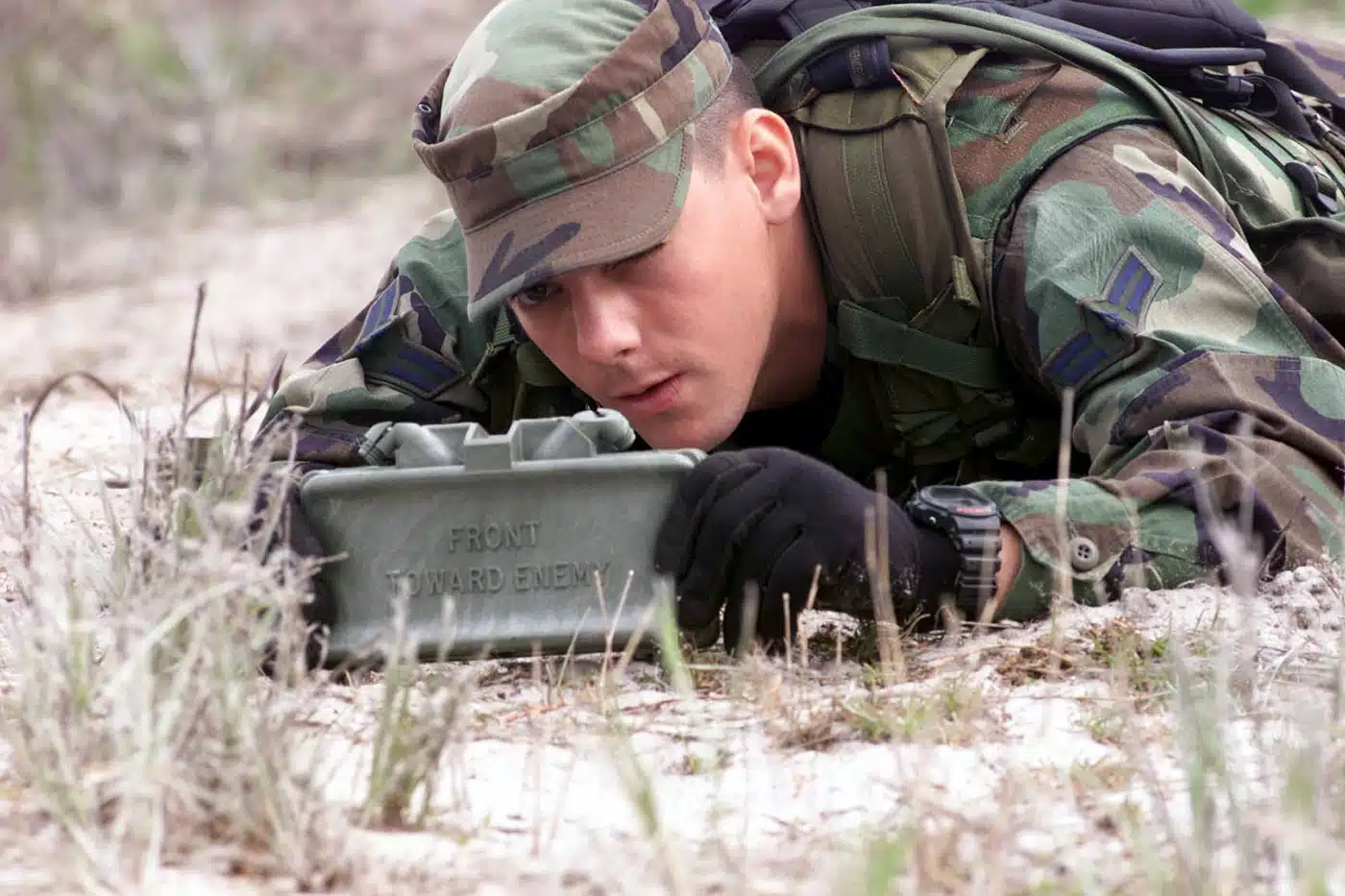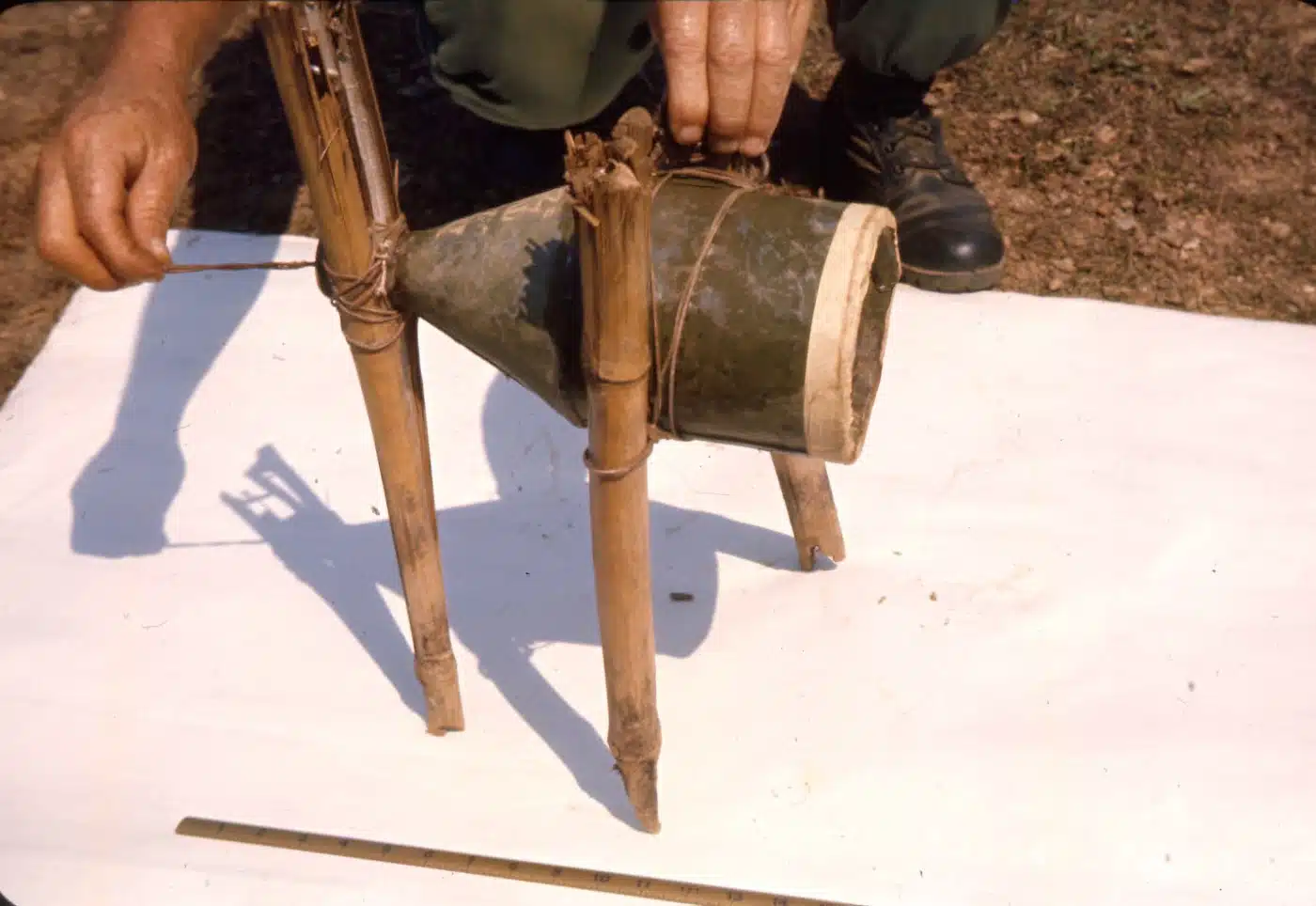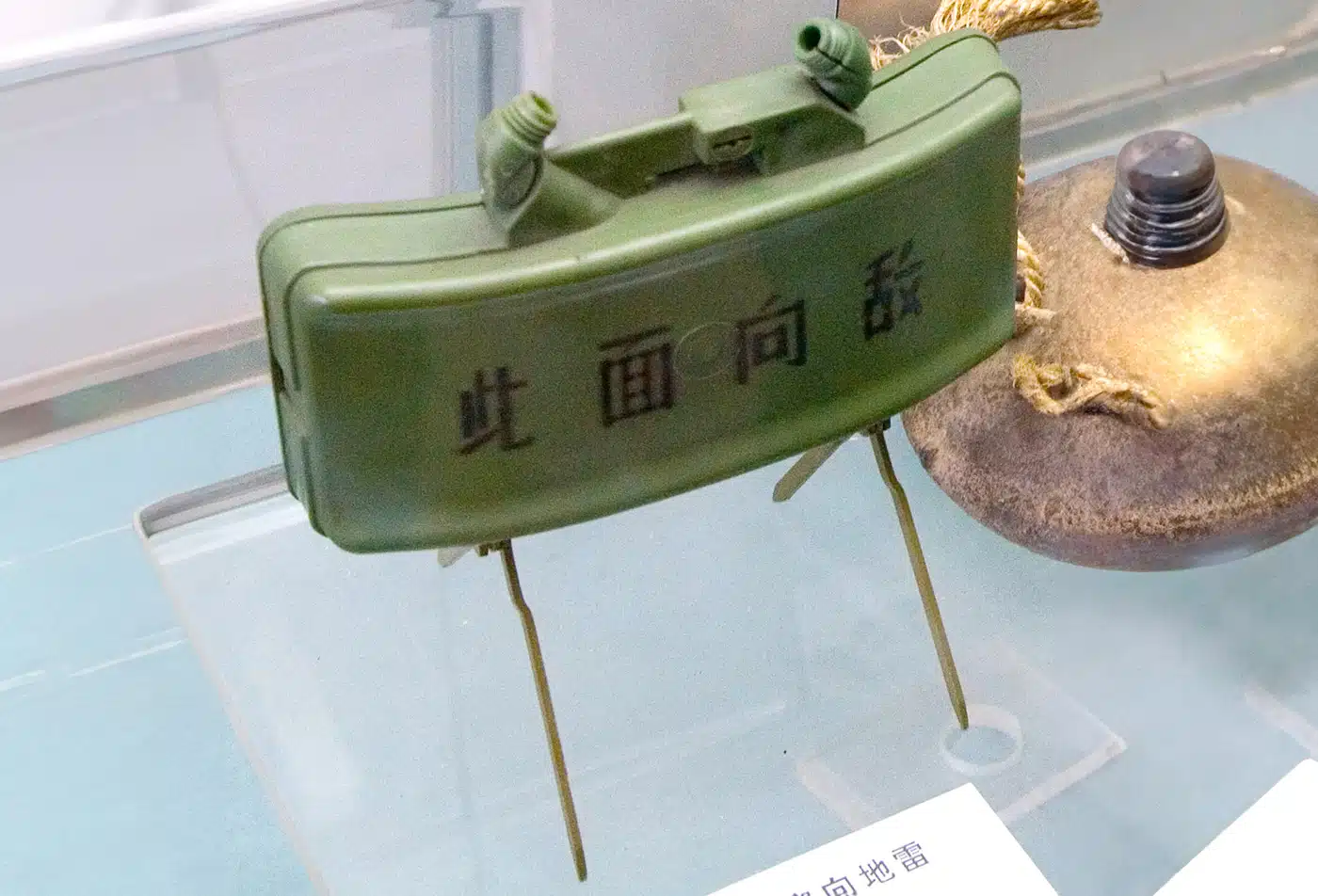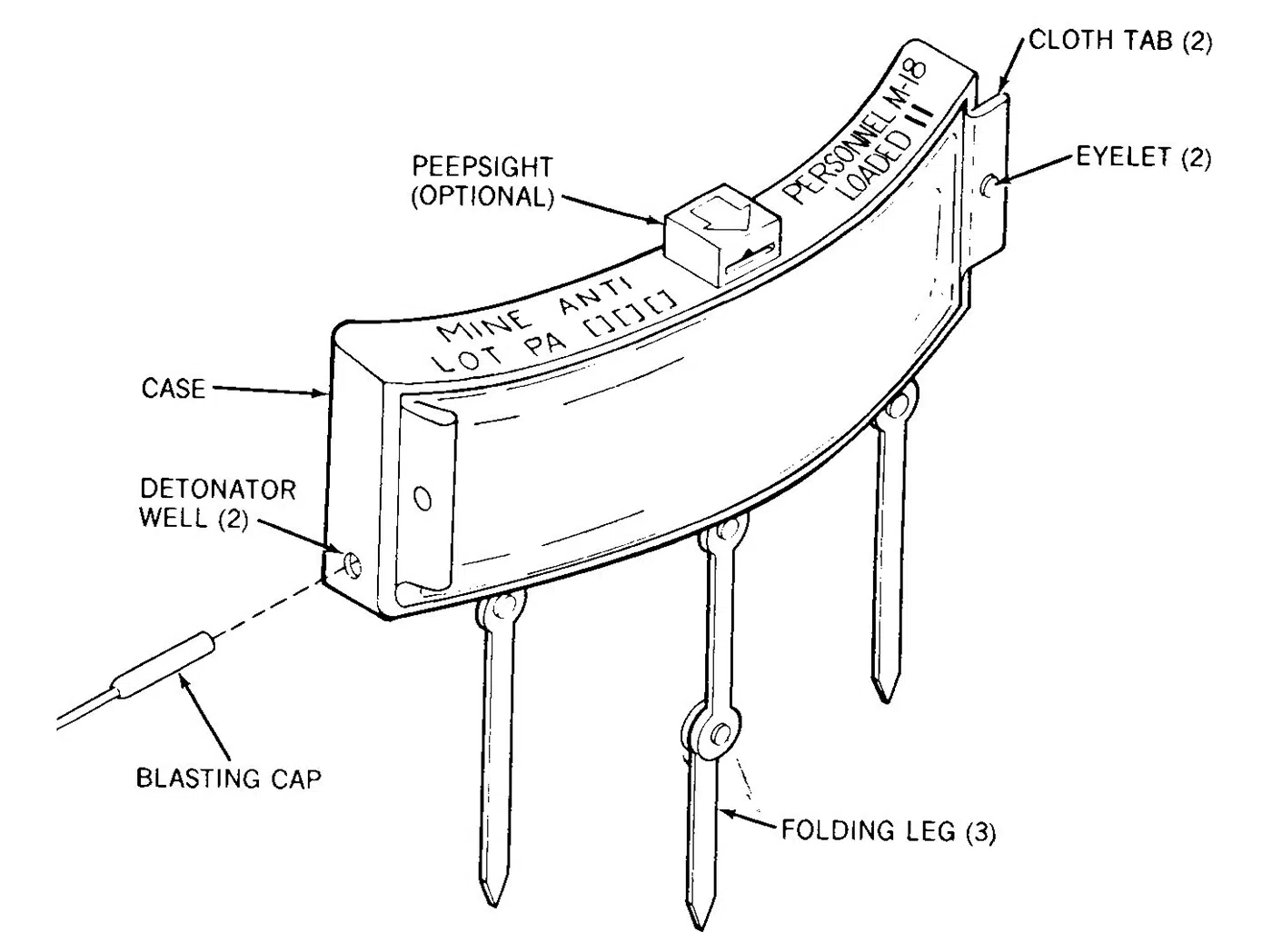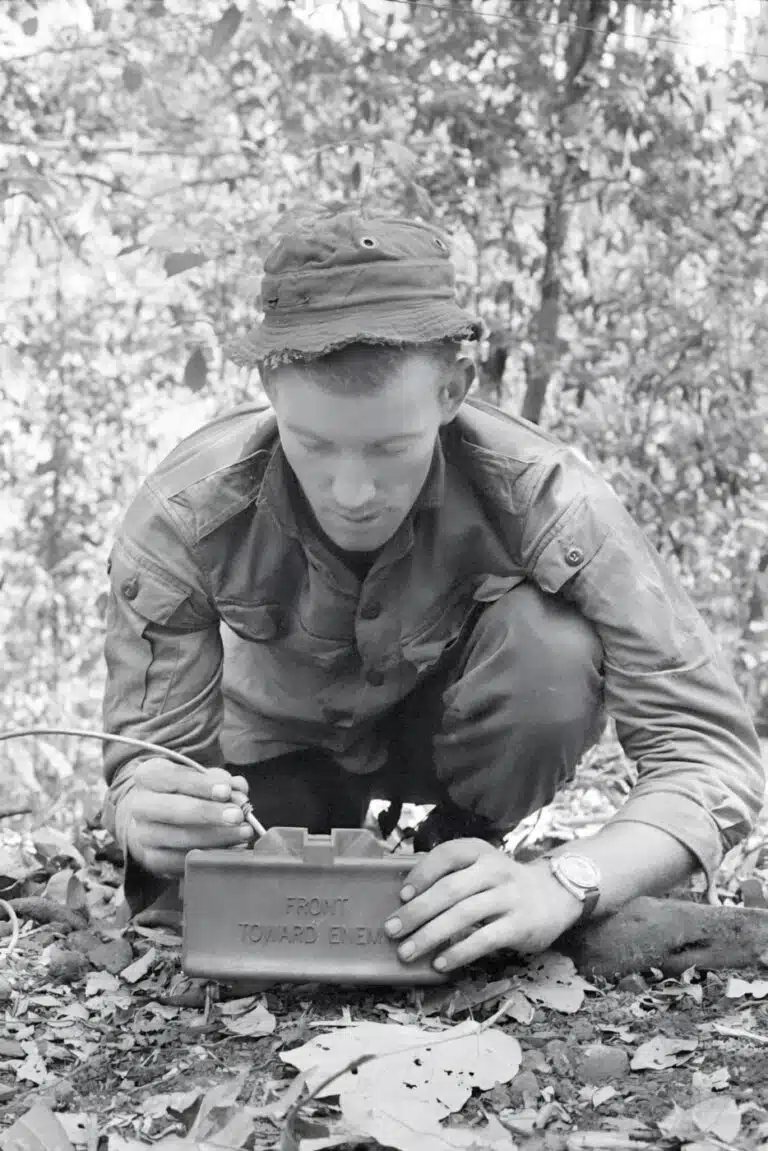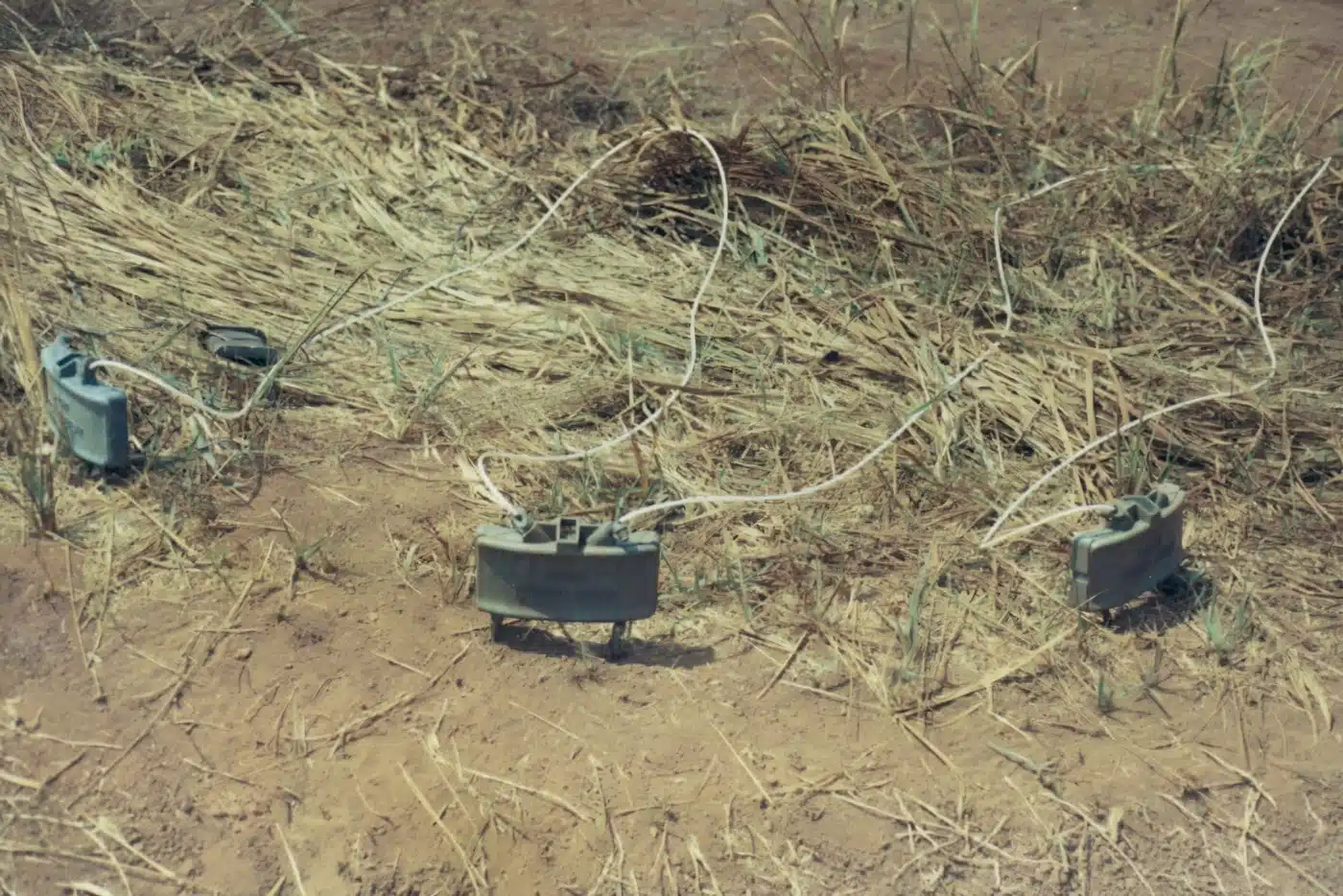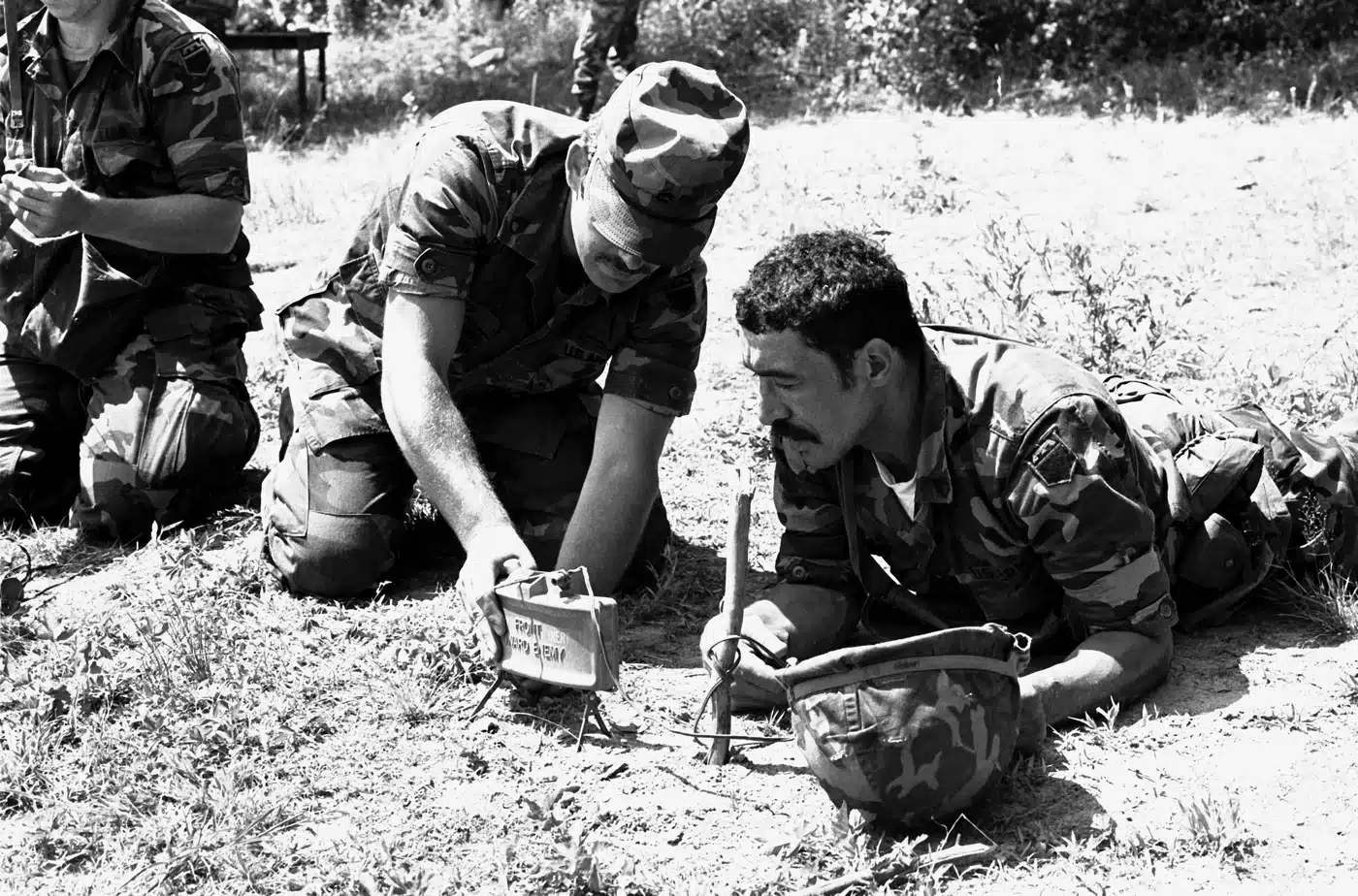Aimed in the right direction, the U.S. M18A1 Claymore mine is one of the most lethal and devastating anti-infiltration weapons of modern warfare. There’s a reason for the qualifier on that kudo, and more about that in a moment. From its initial employment with U.S. forces in the mid-1950s, the Claymore gave infantry units a reliable and deadly device that could be used in perimeter defense or offensively as an ambush trigger.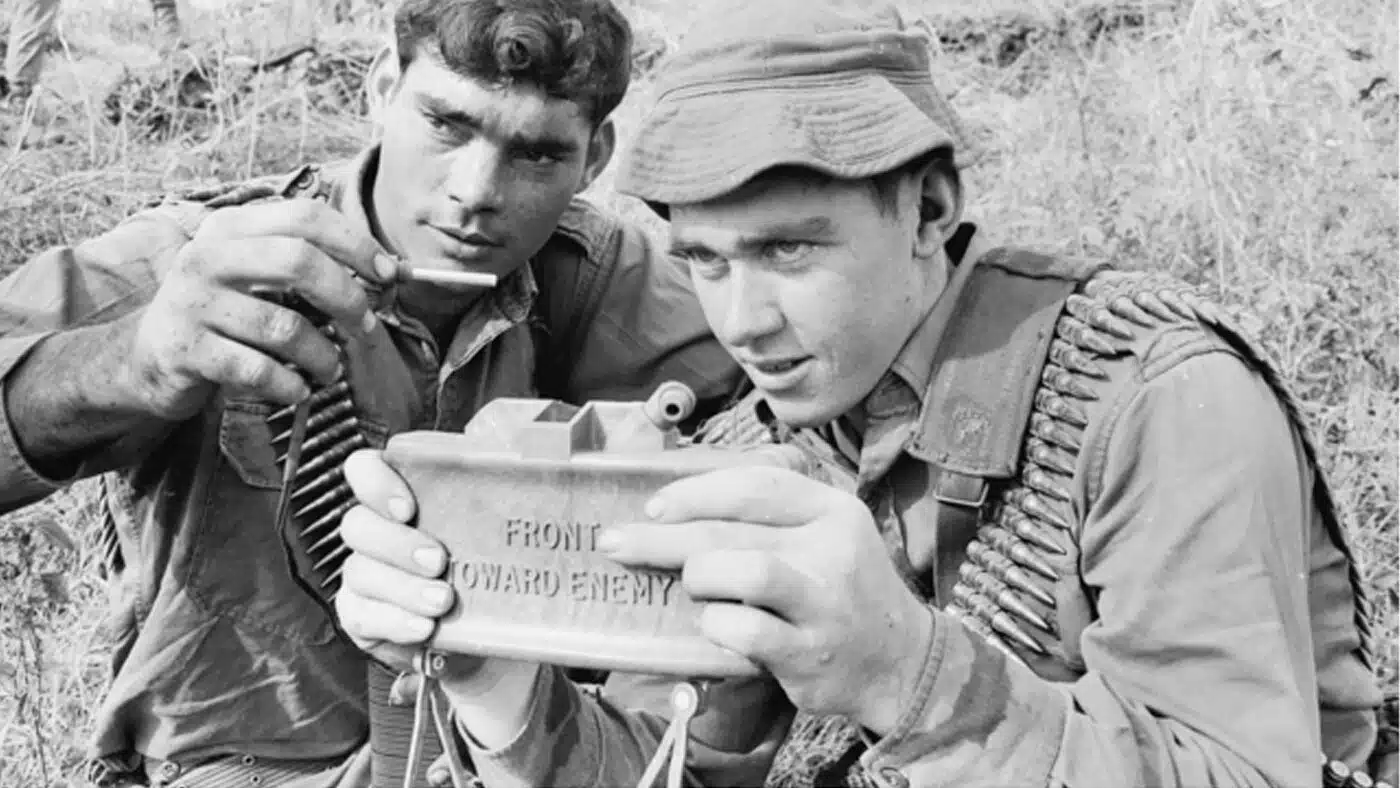
The Claymore, named after the Scottish broadsword that cut bloody swaths through enemies, garnered infamy and worldwide recognition employed for those same purposes in Vietnam.
A New Path for Anti-Personnel Mines
Most mine-type weapons direct explosive power upward and are usually initiated when a man or a vehicle steps on or rolls over a buried or hidden trigger. However, the M18A1 Claymore is a truly directional mine. This means the user can aim the blast as desired.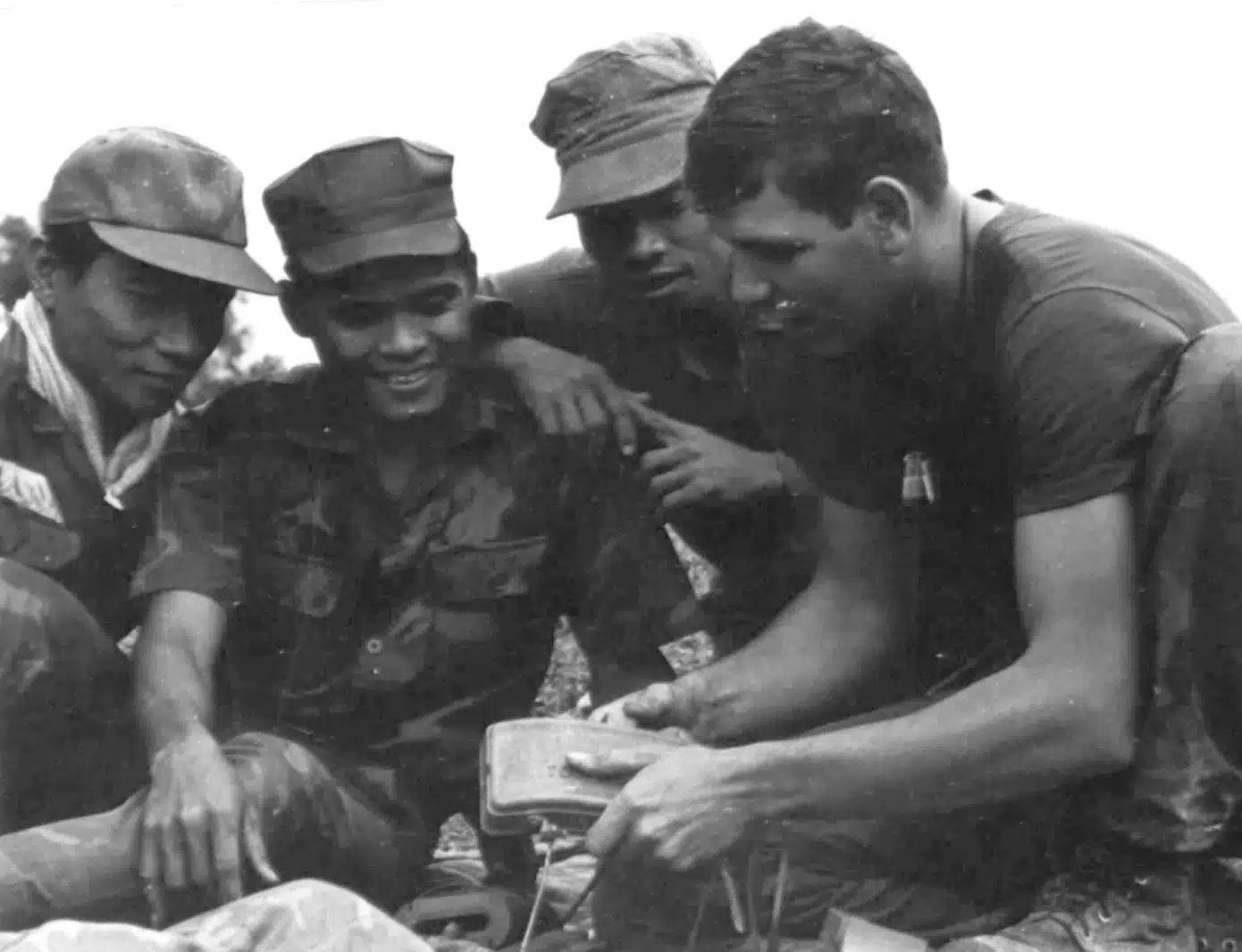
A claymore mine is typically command-detonated via wire crimped to an M4 electrical blasting cap. The detonation is initiated by an M57 squeeze-type firing device (often called a “clacker” for the snapping sound it makes when squeezed to fire the mine), which sends an impulse to the blasting cap and detonates the Claymore.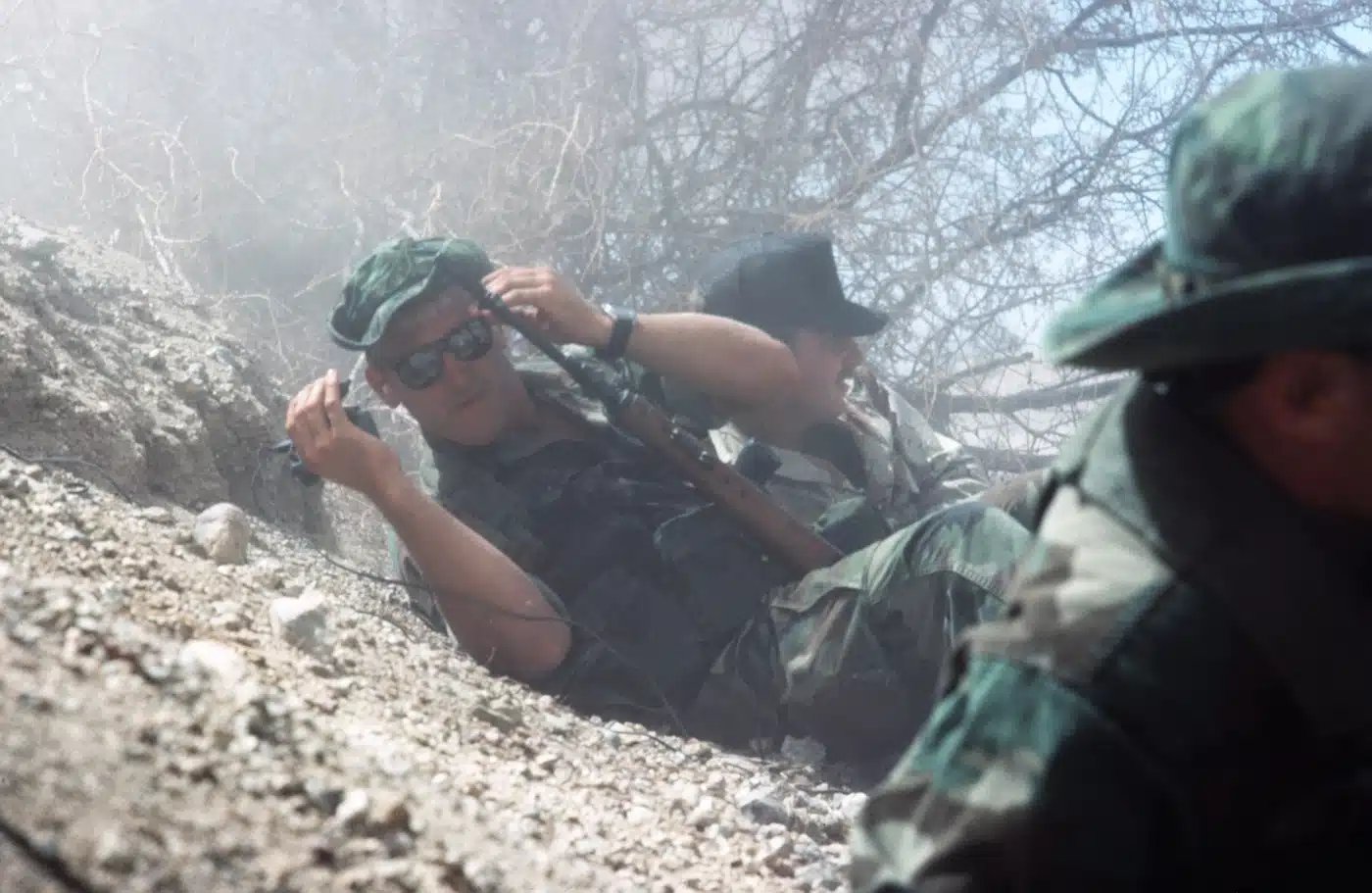
The Claymore package as used in Vietnam, came wrapped in an M7 OD bandolier and weighed in at about four pounds with all components present, including the mine, clacker and 100 feet of wire. The wire was wrapped around a plastic spool, with one end featuring the blasting cap and the other a plug for connecting to the firing device. A printed instruction sheet was sewn into the flap of the Claymore bag for those who slept through the block of instruction for using the mine.
One of the most appealing features of the Claymore is its flexibility. Soldiers can fix it around the perimeter of a position and detonate it remotely as required to prevent infiltrators, or they can use it to sweep trails in order to stop enemy traffic and disrupt resupply or reinforcement efforts. It can also be daisy-chained or attached to other mines for sympathetic detonation to cover a wider area. Employment of the Claymore is really only limited by the soldier’s devious ingenuity.
Directional Mines In Practice
The M18A1 Claymore is essentially a plastic casing, slightly convex in shape, which contains a pound and a half of C4 explosive. Embedded in the C4 are 700 one-eighth-inch steel ball bearings, which make up the shrapnel that is discharged when the mine is detonated. Those ball bearings are approximately the size of a .22 round and are blown out in a 60-degree arc to the front of the mine when it’s triggered. That arc runs from two meters high to 50 meters wide. It’s lethal at about 50 meters and anyone out to about a hundred meters is likely to become a casualty.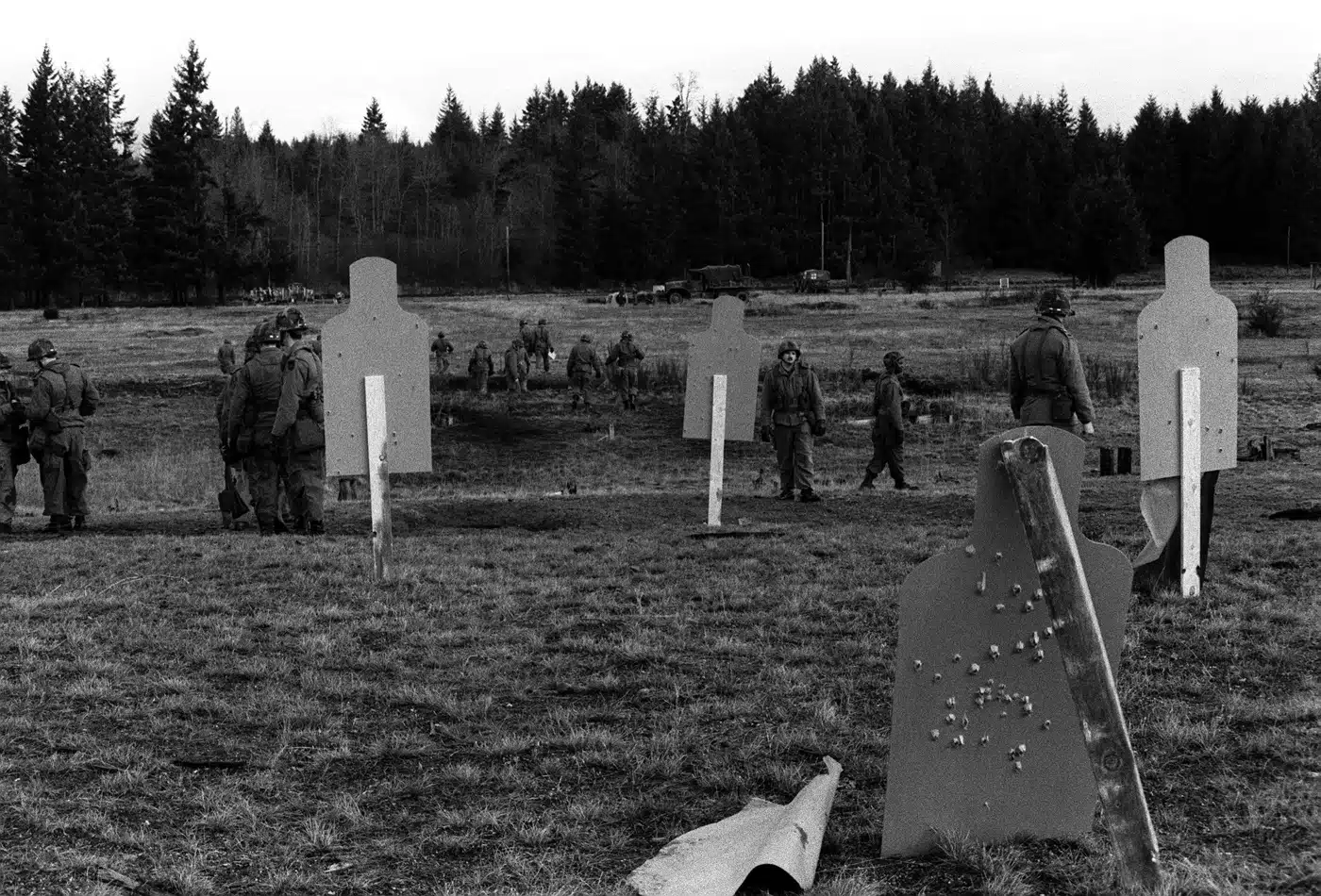
In simple terms, to set the Claymore a soldier or Marine selected a firing position that would give him some protection from backblast, about 20 meters to the rear of the mine itself, and preferably in a hole or behind solid frag cover.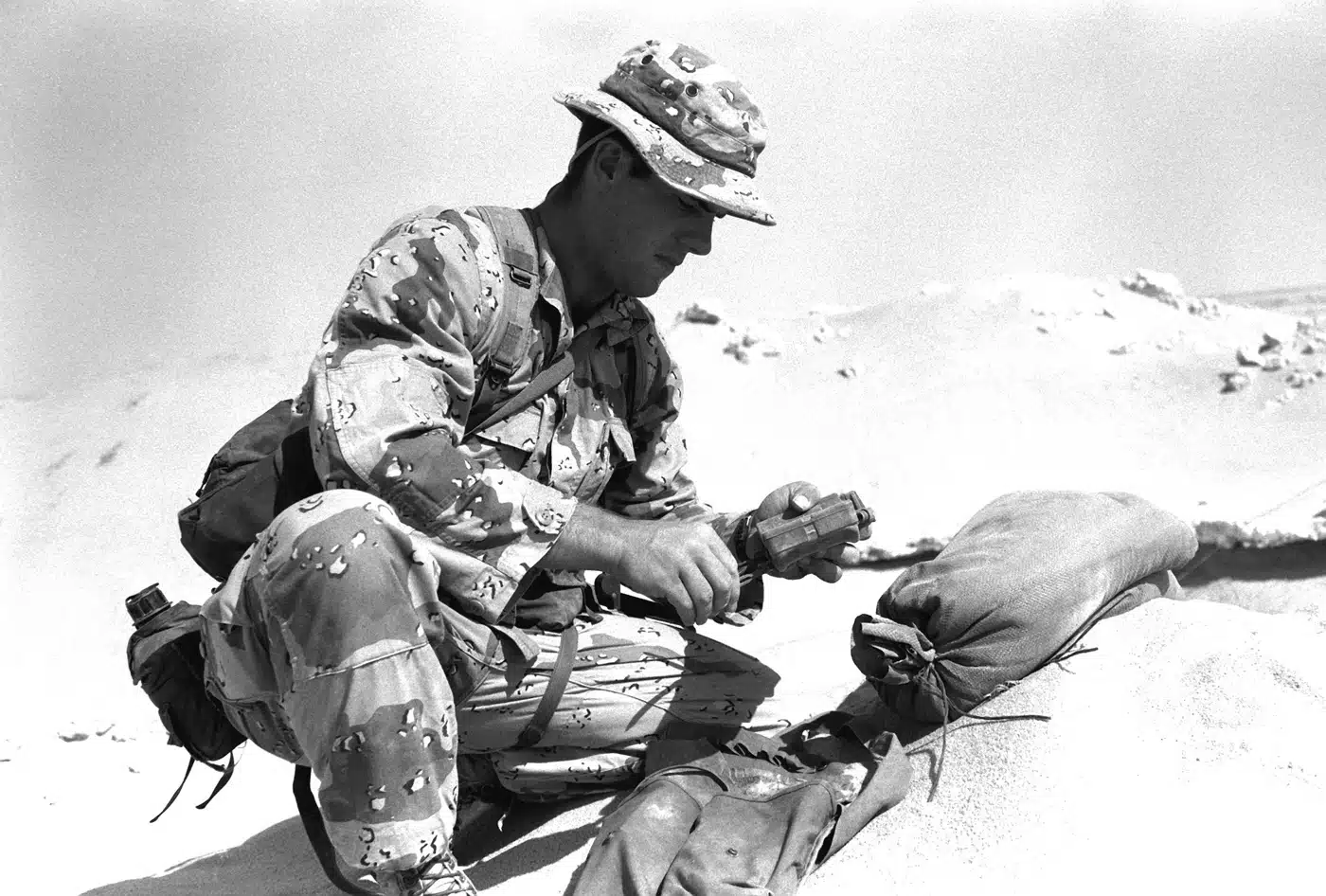
At that point, haul the package to the selected emplacement site, keeping the firing device safely under control in a pocket. Set the mine by unfolding four pointed legs, two on each end of the mine, and press it firmly into the ground. Go prone and aim the device along the intended path of devastation using the peep-sight provided atop the mine casing. 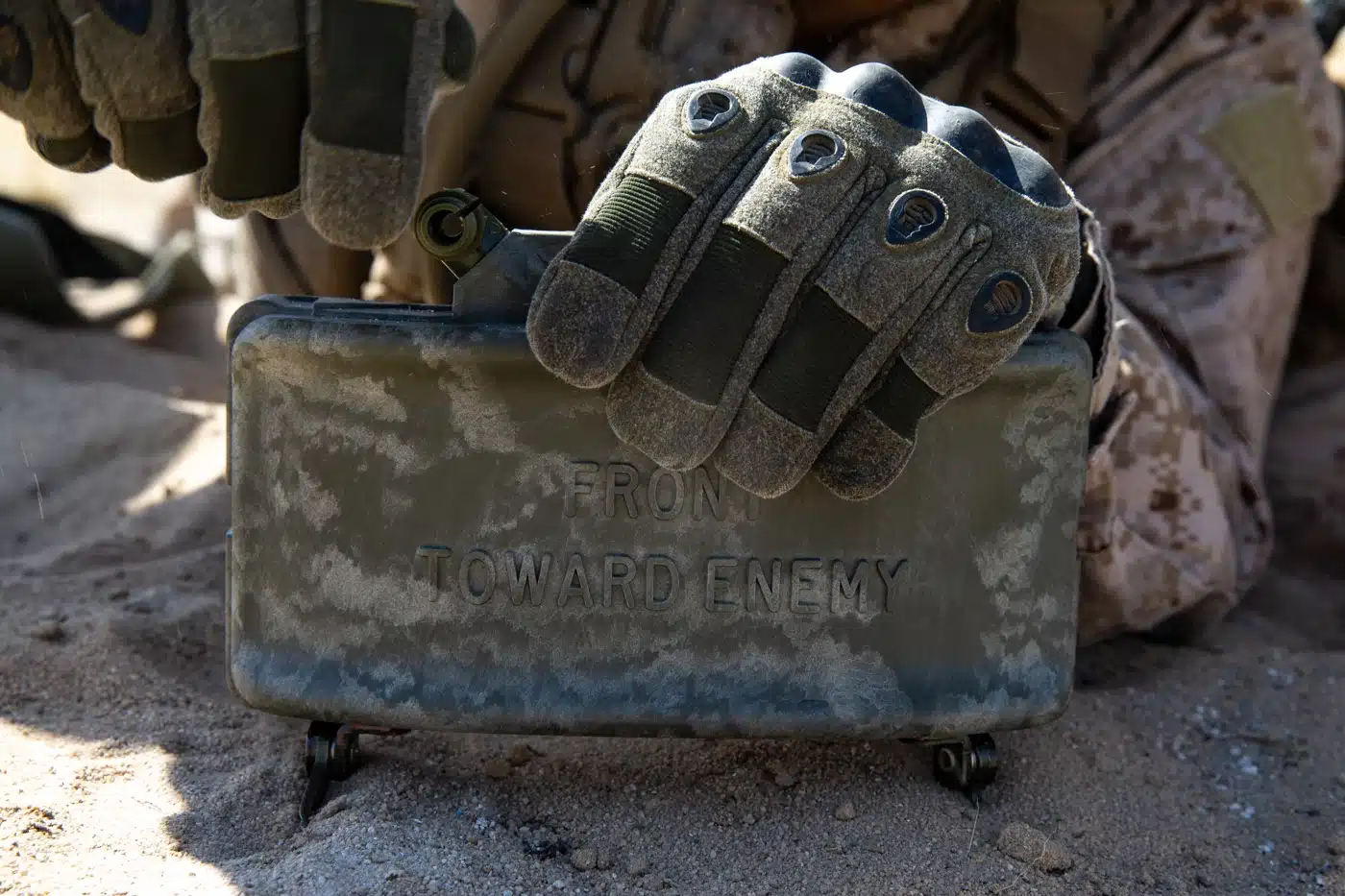
Then, pull the shipping plug from one of the two “ears” on top of the device and thread in the blasting cap. Screw the shipping plug back in to prevent the wired cap from dislodging and camouflage the emplacement with local flora. Then unspool the wire as you return to the firing position.
